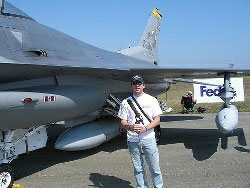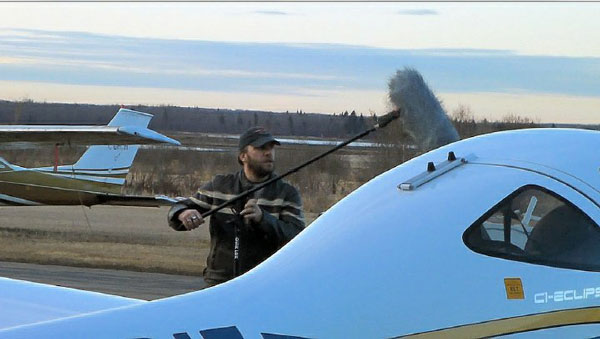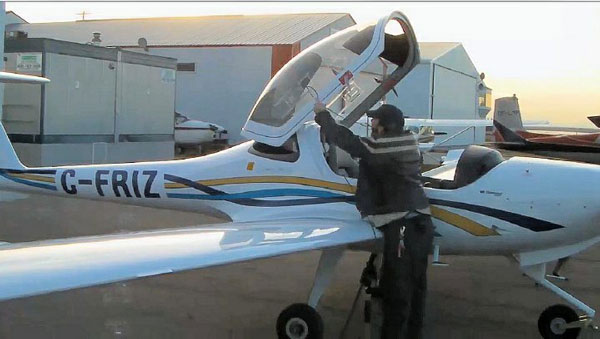Stay Up To Date With Us!
We will never spam you or share your email address.
Game Sound Design Strategies
GSD StrategiesCheck out the gamesounddesign.com strategies when you are feeling creatively uninspired. Each random strategy will present you with a new avenue to pursue. Give them a try!
Game Sound Design Glossary
GSD GlossaryOur game audio glossary has all the sound terms you have been wondering about. Game audio can be confusing enough without having to deal with a new technical language. We are constantly updating the database with new terms that relate to not only game audio but game developer terms as well.
Vance Dylan Field Recording Interview
Interview by George Spanos
This is our second interview with Vance Dylan. The first interview can be found here if you have not read it yet.
Game Sound Design: Hi Vance, and thanks for taking part in another gamesounddesign.com interview. Since we last spoke, a lot has happened with you professionally. You worked at Bioware as a sound designer on such AAA titles like Mass Effect, Mass Effect 2 and Dragon Age. You now have a new venture called Sonic Solutions which we will talk about shortly. Can you elaborate a little on your time at Bioware and what lessons it taught you professionally?
Vance Dylan: Hi George. Yes I'm back on my own. I was at Bioware for Mass Effect 1 and 2 and Dragon Age and then left in Feb 2010. I really learned alot while working with a large team, it was great and learning about how things work in other departments and how it had an impact on you was crucial. I had a pretty decent idea of how some things worked in game development but it was working at Bioware that de-mystified all the missing pieces. Getting to work with programmers, animators and VFX guys was a great experience and seeing all the behind the scenes stuff for marketing helped as well.
GSD: What was the impetus that made you start up your own sound design company?
VD: I always wanted to start making aircraft sound packs for Flight Sim (a flight simulator website) but wasn't able to while adhering to my contract at Bioware. But the day after I quit I started getting the home studio together, bought a domain name, made a site and had my first sound pack up online selling within 5 days. I have a big love for aviation and flight sim so I wanted to combine my love of sound design with aviation. This project gives me a way to do that.
GSD: What challenges do you find with being a self-employed sound designer versus working for a big studio like Bioware/EA?

VD: The first big challenge is that you're out there all alone, no support, no one. No machine behind you giving you support with programming or anything. I'm ok with that and have always worked from home doing this stuff so it was nice to get back to it. The wife was certainly happy to hear sounds streaming out of the studio at home again. It certainly hones your organizing skills as you don't have somebody making your schedules and tasking. You get a sense very quickly that anything you want done, you have to do it yourself or hire someone to help.
GSD: Your company, Sonic Solutions focuses on sound design for simulations. Can you elaborate a little more on what services you provide?
VD: Sonic Solutions is set up for Sound Design for Simulations meaning that I do sound for training software. It's all still based on a gaming engine but there's more focus of the physics and recreating real world scenarios. There's simulation training software for everything you can imagine from flight simulators to logging machines to construction equipment, ship sims, train sims...you name it there's a simulator for it. I've been focusing on flight sim as it's something more I'm into. I've already gotten hundreds of hours of aircraft recordings I've been recording over the last 20 years so I figured I'd turn those into sound packs. I also go out and spend some time with the actual aircraft and record them. If you're a flight sim nerd than you can go out and buy one of my sound packs, install it into the plane it fits and voila, you got yourself new authentic sounds for your fav aircraft.
GSD: Can you talk a little about simulators and what makes them different from your average AAA game title?
VD: Well speaking specifically about the Microsoft Flight Sim series, it's no different than any other game engine...it's got it's good and bad angles but it's one of the few games you can start making third party products for so there's alot of guys out there just like me making stuff for flight sim. There's a very cool community behind it of both users and developers but you'll find most folks do a lil aircraft re-paints or they work on flight dynamics on the side or doing scenery for different areas and airports. I think the biggest difference between Flight Sim and any other Triple A game is that ongoing development from the 3rd party developers that add years to the life of the game.
GSD: What would you say is the biggest difference between sound design for games and sound design/field recording for simulations and sound packs?
VD: The first thing is that you get to leave the studio way more. You go from a world where everything is sci fi when making games like Mass Effect to a new experience where reality is everything. My tools changed up a bit more and went from software synths to hardware although I still use Alchemy from time to time. The biggest change for me was keeping realism in mind. Trying to mimic exactly how an aircraft sounds in real life is pretty challenging when in flight. Distance, Air Density and wind for instance all have a dramatic effect on how sound travels outside. You just can't say well it's sci fi and it's a spaceship so you can set the thing up the way you want. With realism you really have to strive to make the helicopter or jet sound like it does in real life through start up, all RPMs and shutdown.
GSD: What is some of the gear that you use when recording aircraft in the field?
VD: I've been taking a small Nuendo rig with 16 channels of Focusrite Preamps out to the locations. I also take a 16 channel snake and a bunch of mics. I'll usually take the Shoeps CMIT5U and other shotgun mics like an Audio Technica and an old JVC M150 that still sounds good. I'll usually take a few small diaphragm condensers for interiors and a few heavy hitting dynamics for exhaust and engines. Usually I try to keep the rig on the small side.

GSD: When field recording, it is very important to plan out your sessions so that you can capture the best audio possible. What are some tips you would give to aspiring field recordists when it comes to planning a field recording session?
VD: Planning is everything no matter what you're doing right? Recording an aircraft, especially a military one takes planning. You need to be real familiar with the plane and have a pretty good idea of where the sounds are you want and how you're gonna capture em. Everything from planning the road trip, to clearance of the airfield has gotta be covered. You need to book the plane, pay for fuel, book and pay for a pilot and be prepared to spend very little time trying to get the most sounds. If you can snag two hours with a plane you're doing good. These things don't make money or do their job sitting on the ground so you better plan out every scenario. An easy tip is pack more in your car or van than you need. You don't have to set it up but I've seen more than one gig almost shit the bed because no one brought a coupler or some quirky adaptor. Set up your rig in full before hand and make sure all your bugs are worked out.
GSD: What type of aircraft do you most enjoy recording and why?
VD:That's a tough one, each plane has it's own sonic personality. Even two common planes of the same model will differ slightly. I like the older war birds, you just can't beat the sound of a radial engine. I've been getting into helicopters lately. They're more complicated and challenging to get sounding right in game.
GSD: Do you have a pilot's license? :)
VD: I'm almost finished getting my pilot's license. I haven't kept up with it too much since leaving Bioware but luckily out here on the East Coast (of Canada) the prices are half as much as they were in Edmonton. I'm about 15 hours shy of getting my license.
GSD:What sort of clearances do you have to get in order to record aircraft? Who do you call to get access to aircraft for recording purposes?
VD: It all depends on what type of plane it is. Sometimes you can just walk into a municipal airport and find some dude washing his Super Cub and get him to fire it up for you. If you're recording a C130 then you have to get in touch with the base and security and spend a bunch of time on the phone and emailing to get clearance. Luckily up here (in Canada) things aren't as tight as they are in the States on airfields so you can get things done easier. Usually the first call I make is the FBO operator if it's civilian and if it's military I'll get in touch with the base media manager. I'll explain what it is I'm doing and how the sounds will be used and from there we'll start working on the schedule of when I can get the plane and for how long.

GSD: When field recording one of the problems that a sound designer faces is wind noise ruining a recording. With aircraft, wind noise can be an even greater problem for capturing a great recording. What do you do to minimize wind noise when in the field?
VD: By nature airports are usually windy to some degree, it's a big open area so I try to get the aircraft close to the hangar or another area with some buildings around to provide some protection yet still trying to avoid bleedback from the buildings. I don't do anything crazy for the wind aside from rolling a bit of bottom from the shotguns and careful placement of mics to get the sound with out the wind. For me the key is in the selection of your wind screens. Leave the foamies at home as they'll breakup in just a few mph of wind let alone being behind a propeller.I have a few Rycotes and some custom made windscreens that create a nice big pocket of dead air for the mic and they can handle some big wind speeds and gusts.
GSD: Once you have your recordings and you're back in your studio, what techniques do you use to achieve the final sound of each part of the aircraft? Do you commonly blend multiple mic setups together?
VD: Back in the studio I'll try to keep things nice and layered. Like most vehicles aircraft have many sounds all around them so I try to keep those sounds I've recorded true to the model in game. For instance if a plane has an exhaust out of the one side and can mostly be heard in a 90 degree cone then I'll implement it the same in game. I'll make sure that exhaust sound is playing on the correct side with the same degree of width as it did in real life. Working in layers adds a bit to the content but it's worth it. Some of the planes in flight sim have one general sound through out all the RPM's so you can hear mostly all of the components of the plane but I really like going the extra distance and doing rpm ranges for the front and back and any other lil nugs of sound that stick out and make the sound unique. Aircraft all have a different sound as it's flying toward you, past you and away so getting impementation done with layers offers a more realistic sound and adds an ever changing experience.
GSD: You mentioned that planning is key to a great recording. Do you go as far as planning out which microphones you will use and in what combination for each part of the aircraft?
VD: Oh yeah, it's crucial. You don't have much time to spend with most airplanes so you can't be out on the tarmac staring at it wondering which mics you should use. I youtube the shit out of em to get a general idea of the sound and I'll make a 3 view of the plane. I take that 3 view and draw out where I want which mics to be. I'll usually send that to the person who will be with me whether it be the flight director at the FBO or the pilot. I always start off with some safety procedures so that everyone is safe, the plane doesn't get damaged as well as gear. Sometimes these planes are near full throttle on the ground so having a brake failure would be a bad thing. When I arrive on site I expect to have my stuff unloaded, set up, plane mic'd and ready for line checks within 30 minutes of wheeling the plane out of the hangar. I follow my plans and microphone maps closely and stick to the plan.

GSD: You have been recording aircraft for over 20 years, which is quite impressive. Do you have specific mics that you use on the same parts of every airplane or is every recording setup completely different?
VD: I have a few mics that I'll pull out every time. The shot guns and rycotes see every show but every plane is different. I have some big dynamics that can take high SPL so I'll pick one of those for an exhaust or something. I'm starting to get the microphone set up closer to being more or less standardized and that cuts down some time in the planning process. I often thought of using a lil handheld jobbie for a mic/recorder set up but I like setting up sessions too much for that. I usually do bring a few extra mics that I didn't plan on and if it's a good bang for the buck, I'll throw it in and track it. I usually like to bring the Crown PZM out and secure it to the ground or get it right under the engine cowling or somewhere out of the way of the prop wash but still get a good sound from the engine while trying not to catch it on fire.
GSD: What have you got planned for Sonic Solutions sound packs in the near future?
VD: In the near future I'm headed out to New Brunswick to record a bunch of aerial fire fighting planes, something like 5 or 6 planes all to be recorded in a day, that'll be a great trip. I've also started another venture where I'm making the full aircraft add ons for Flight Sim now so I have a small team of guys who work with me modelling, programming and doing paints and textures so that's been very exciting. I'm hoping to have my first plane in stores this fall or winter.

